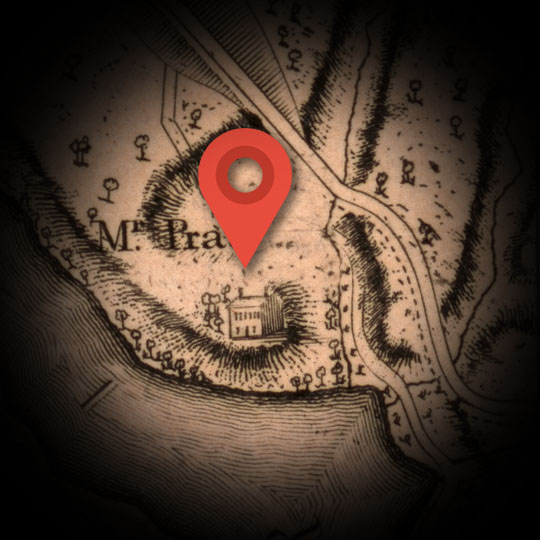THE HILLS
Explore
Robert Morris, born to and raised in a prosperous, merchant family in Liverpool, England, immigrated to Maryland in the early 1740s as a young teenager. He soon made his way to Philadelphia, which was by far the most cultivated and European-style city in the British colonies of North America. Morris was on his way to becoming the richest man in America and make crucial contributions to the land’s independence movement. Morris would sign the Declaration of Independence and personally work to underwrite the rebelling military operation, including being a paymaster for spies.
Morris began his career in the same sort of international trade—tobacco, rum, enslaved people—that Alexander Hamilton was involved in as a clerk at the Kortright & Kruger firm on the island of St. Croix. Even in the midst of the Revolutionary War, Hamilton increasingly turned his attention to monetary and financial matters involved in the revolution. Once peace could be established and the former colonies were able to govern themselves fully, Hamilton aspired to make a place for himself within this sector. Just as with his dreams of achieving military glory and weighty personal influence, Hamilton pressed on inexhaustibly until his goals were realized.
In the spring of 1781, Hamilton began to work seriously towards cultivating a relationship with Robert Morris. He borrowed books from friends and labored diligently on drafts of a letter expressing his own views of what American monetary and trade policy should look like. There is almost a “fan mail” quality in the earnestness he put into the effort. His newlywed wife Elizabeth Hamilton and others carefully scribed down his lengthy dictation.
The gambit worked. And Hamilton would later double down, lobbying for Morris’s tax policy proposals in the New York State government.
Once the U.S. Constitution was in place and George Washington was elected not only to become the first president but also appoint the first ministry of cabinet officers, nearly everyone assumed Morris would become the Secretary of the Treasury. Morris, however, declined. And he caught Washington off guard by suggesting Hamilton in his place. Washington eventually found in favor of this advice, and Hamilton earned himself a triumphant win.
Robert Morris had purchased two lots outside the city of Philadelphia in a piece of land called the Vineyard Tract. The Vineyard Tract was intended by its original owner to be subdivided into properties for wealthy Philadelphians’ country estates, and this is precisely what Morris began to construct. His villa, which he dubbed “The Hills,” would, however, always be an uncompleted work-in-progress. Morris reported occupying The Hills only spottily but did boast of having supper there every Sunday, even after the British had seized Philadelphia and were making life dangerous for area patriots.
Morris invited Hamilton and his young family to live at The Hills while they were residing in Philadelphia for Hamilton’s government work. Morris also kept a mansion in the city proper, which, like The Hills, he kept spending money to renovate and make more sumptuous but never completed. According to Allan McClane Hamilton, one of Hamilton’s grandsons and a noted early 20th Century psychiatrist, Hamilton’s family would stay at The Hills during their later Philadelphia years. Perhaps it was proscriptive for the family to get out of town in the wake of Hamilton’s affair with Maria Reynolds.
Morris would suffers scandals of his own making, as well. He disastrously overextended himself in land speculation and other risky forms of financial investment. His personal holdings were already on a downward slide in the mid 1790s, but it the Panic of 1797 would cut him down permanently. He was forced to file for bankruptcy and spend three and a half years in debtors’ prison. Friends covered meager living expenses for him in the final years of his life, and he died in 1806 to little public fanfare.
Morris’s bankruptcy caused The Hills to be condemned. Another leading Philadelphia merchant, Henry Pratt, purchased the lots, demolished The Hills, and erected his own mansion—Lemon Hill—on the site. Lemon Hill stands today and has been incorporated as a museum inside Philadelphia’s Fairmount Park.

TIME FRAME:
1791-1795
